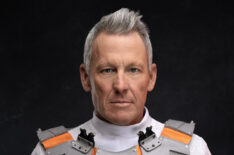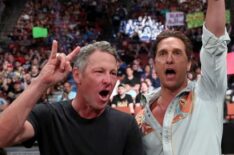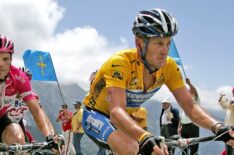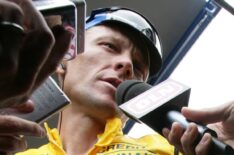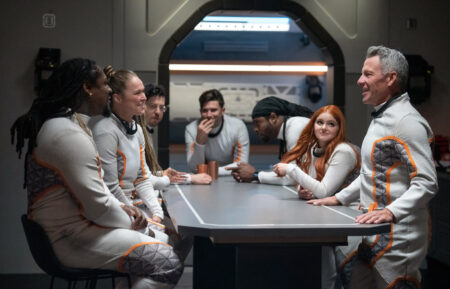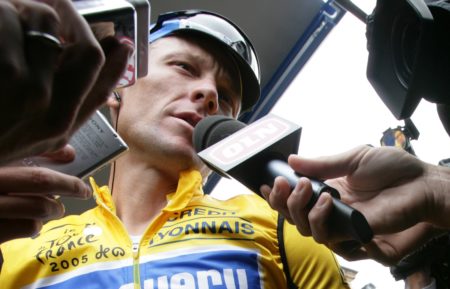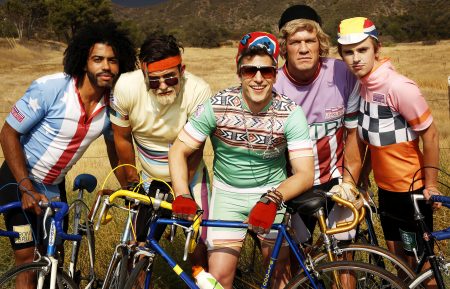Lance Armstrong

Bicyclist
Birth Name: Lance Edward Gunderson
Birth Date: September 18, 1971
Age: 53 years old
Birth Place: Dallas, Texas
Partners: Sheryl Crow
The most famous American cyclist of all time and perhaps one of the most beloved athletes in sports history, Lance Armstrong was initially written off when he was diagnosed with testicular cancer. His Cinderella-worthy story of a post-cancer return to cycling and subsequent international domination of the sport made him a folk hero, and as the founder and face of the Lance Armstrong Foundation, he earned the goodwill of millions as well as raising immense funds for cancer research thanks to the sales of his yellow rubber "LiveStrong" bracelets.
Hugely successful at raising cancer awareness and funds for research on a global scale as well as cycling, Armstrong won the Tour de France an astounding seven times. Famous and respected to an extent rare for a professional athlete and unheard of for a cyclist, Armstrong publicly dated singer-songwriter Sheryl Crow and played himself in films including "Dodgeball: A True Underdog Story" (2004) and "You, Me and Dupree" (2006). Despite his nearly universal appeal, Armstrong was not without his detractors.
In 2010 a federal investigation into allegations of doping by the cyclist was launched. Armstrong denied all charges, but after two years of scrutiny, Armstrong withdrew his opposition to the case in 2012 and was officially stripped of all seven Tour de France titles and banned for life from the sport later that year.
He eventually came clean in 2013, admitting to doping. It was a sad footnote to the athlete's career, although the world knew better than to ever assume that Armstrong was down for the count.
Born Sept. 18, 1971 in Dallas, TX, Lance Edward Gunderson took the last name "Armstrong" when his mother's second husband adopted him. Always athletic, he began his competitive career as a swimmer at age 12, finishing fourth in the state for the 1,500-meter freestyle. He won the Iron Kids Triathlon at age 13 and turned pro triathlete at 16.
After a stint training with the U.S. Olympic cycling developmental team in Colorado, Armstrong focused all his energy on bike racing, qualifying for the junior world championships in 1989 and winning the U.S. National Amateur Championship in 1991. That same year, he turned pro as a bike racer. He quickly rose to dominate the professional ranks, winning Italy's Trophee Laigueglia and placing 14th in the 1992 Summer Olympics, which earned him a contract with Motorola.
In 1993, he won 10 one-day events and stage racings, including his first stage win at the Tour de France and taking first overall at the UCI Road World Championship. The unstoppable Armstrong went on to win the Thrift Drug Triple Crown: the Thrift Drug Classic in Pittsburgh, PA, the K-Mart West Virginia Classic, and the CoreStates USPRO national championship in Philadelphia, PA, earning him $1 million. Over the next few years, he continued to notch amazing victories and impressive finishes, winning the Tour DuPont twice and becoming the first American to win the La Flèche Wallonne.
Shockingly, his physical performance began to suffer, and he turned in a disappointing performance in the 1996 Summer Olympics. In October of that year, at the age of just 25, Armstrong received a fateful diagnosis that explained the downslide: he had developed stage three testicular cancer, which had spread to his lungs and brain. With less than a 50 percent chance of recovery, Armstrong embarked on an aggressive course of chemotherapy that offered less danger of losing lung capacity should he recover. Amazingly, the treatment worked, although he had to have a testicle removed, and his cancer went into complete remission.
Armstrong began training again in earnest once the U.S. Postal Service took the unprecedented step of signing him, despite the staggering odds stacked against the cyclist. In 1997, he founded the Lance Armstrong Foundation to support people affected by cancer, and the organization became one of the world's most recognized and widely supported groups funding U.S. cancer research, in great part due to the overwhelming success - more than $325 million - from sales of the iconic, ubiquitous yellow rubber "LiveStrong" bracelets. More than just a phrase stamped on the bracelets, LiveStrong became a Nike-sponsored movement and eventually a website intended to redefine health, fitness and lifestyle choices. Even as his personal fame reached new peaks and his standing as one of the most respected and beloved American athletes soared, the cyclist was facing his own professional demons.
In fact, after a poor showing in 1998, Armstrong hit a personal low and many considered his career to be over. The athlete moved to North Carolina to rebuild his body and spirit, and his new, holistic approach to life and to training proved successful when he notched a pair of top-five finishes in the Tour of Spain and the World Championships. Although the fact that he was able to compete in the Tour de France again would have been story enough, Armstrong's jaw-dropping 1999 victory made him more than just a star athlete - he became an international folk hero and beloved reminder of the triumph of the human spirit. He would go on to win the Tour de France again an astounding six additional times, back-to-back from 2000 to 2005.
On July 24, 2005, Armstrong announced his retirement from professional cycling. His profile had risen considerably across pop culture in the meantime, and he memorably dated singer-songwriter Sheryl Crow from 2003 until 2006. Ironically, not long after their breakup, Crow discovered she had breast cancer, leading Armstrong to offer his ex his help in any way he could. At the same time, the athlete was making the jump to film, scoring cameos in the comedies "Dodgeball: A True Underdog Story" (2004), "You, Me and Dupree" (2006) and a slew of personal appearances on numerous talk and variety shows across the spectrum.
Awarded practically every honor available to an athlete, Armstrong could claim among his plaudits being named Sportsman of the Year in 2002 from Sports Illustrated, being named Male Athlete of the Year four times from 2002 to 2005 from the Associated Press, winning Best Male Athlete at the ESPY Awards four times from 2003 to 2006, being named ABC Wide World of Sports Athlete of the Year, and earning a 2008 slot in TIME magazine's 100 Most Influential People.
Mostly dedicating himself to raising awareness and funds for cancer research, Armstrong surprised many when he announced in late 2008 that he would return to pro cycling with the goal of competing in the 2009 Tour de France. Although his participation in the 2009 UCI Tour Down Under resulted in a 29th place finish, fans booked every hotel room in the Australian city of Adelaide to see him and flooded the South Australian economy with $17 million dollars. Accordingly, the government of Australia pledged more than $4 million towards a cancer research center in Armstrong's honor. Balancing his charitable and athletic duties, Armstrong continued to participate in races leading up to the Tour de France until he crashed in a rider pileup in the 2009 Vuelta a Castilla y León and broke his collarbone.
After surgery, he was training again within four days of the operation, and after another flurry of races in preparation, entered the 2009 Tour de France and took home a third-place finish overall. He immediately announced he would compete in the 2010 Tour de France, and after another year of training and racing, put in another impressive attempt. This time sponsored by RadioShack, he placed 23rd.
As sterling a reputation as Armstrong enjoyed, he was not without his critics, and he faced persistent allegations of using performance-enhancing drugs, or doping. Despite Armstrong successfully passing multiple drug tests during the 2008-09 year, the accusations continued, with a former teammate, Tyler Hamilton, telling CBS News and "60 Minutes" (CBS, 1968- ) on May 19, 2011 that he and Armstrong had indeed participated in doping and that the cyclist had paid off officials. Armstrong continued to steadfastly deny any wrongdoing, but a federal investigation was still launched. Despite several attempts to have his case taken out of the jurisdiction of the U.S. Anti-Doping Agency and put into the legal court system - where Armstrong's team felt the athlete would stand a far better chance of prevailing - the case remained with the government agency.
In August 2012, Armstrong announced that he would no longer fight the charges leveled against him by the USADA, stating that after two years, he had grown tired of what he described as an "unconstitutional witch hunt." The following day, the USADA announced that the cyclist should be stripped of his seven Tour de France titles, in addition to being banned from competition for life. While the Tour de France organization withheld comment on the decision pending more information, the International Cycling Union stated that it would like an explanation from the USADA as to exactly why it was necessary to strip Armstrong of his titles. Two months later, Armstrong - still denying any wrongdoing - voluntarily stepped down as chairman for the Livestrong Foundation he created. Wasting no time, Nike said they were dropping him after 16 years, stating: "Due to the seemingly insurmountable evidence that Lance Armstrong participated in doping and misled Nike for more than a decade, it is with great sadness that we have terminated our contract with him." Only days later, Armstrong was officially stripped of his titles and banned for life, after the UCI agreed with the USADA.
In January 2013, while giving an interview to Oprah Winfrey on her OWN network, Armstrong fessed up to taking performance-enhancing drugs, insisting even that he did not believe he could have won all seven Tour de France titles without doping. Hours before the interview had even aired, he was striped of his medal from the 2000 Sydney Olympics. Several months after Armstrong was stripped of his medals, director Alex Gibney released a revealing documentary called "The Armstrong Lie" (2013). The documentary, which screened at the 2013 Toronto International Film Festival, was authorized by the cyclist and aimed to set the record straight on both his life and career in the aftermath of the doping scandal.
Jonathan Riggs
Credits

THEMOVE
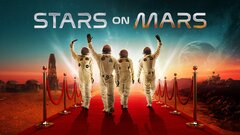
Stars on MarsStream

50+ Years of Sport

Lance

Lance

Lance Armstrong: The Next Stage
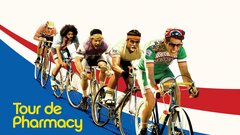
Tour de PharmacyStream

Tainted Blood: The Untold Story of the 1984 Olympic Blood Doping Scandal

Doped: The Dirty Side of Sports

Lance Armstrong: The Road Ahead

Stop at Nothing: The Lance Armstrong Story

The Armstrong Lie

The World According to Lance

Life Before Death
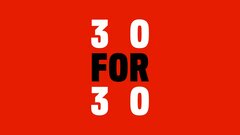
30 for 30Stream
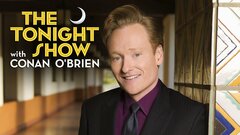
The Tonight Show With Conan O'Brien

Stand Up to Cancer
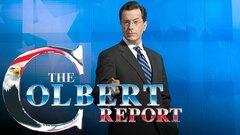
The Colbert Report

The Insider
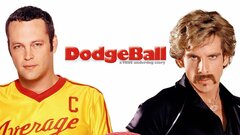
Dodgeball: A True Underdog StoryStream

Dodgeball: A True Underdog StoryStream

Live With Regis and Kelly

Road to Paris
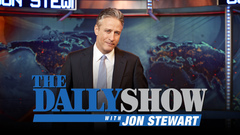
The Daily Show With Jon StewartStream

The View
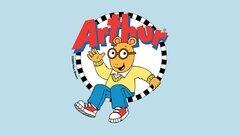
ArthurStream
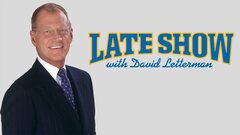
Late Show With David Letterman
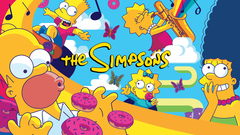
The SimpsonsStream


